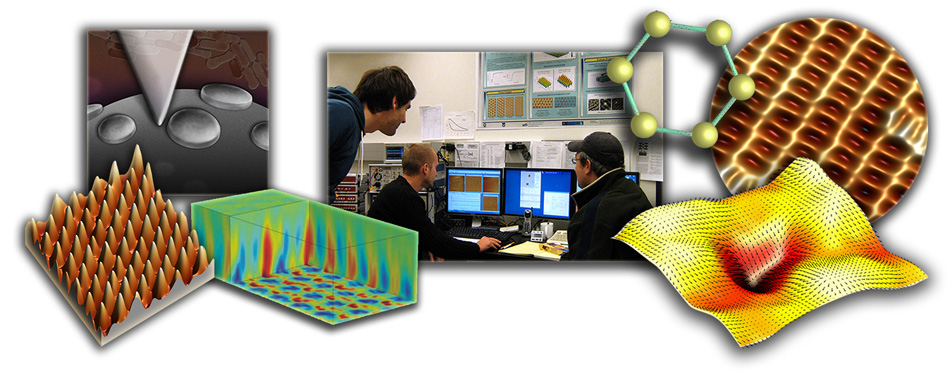Nanoprobe Group Research Overview:
Local Structural, Mechanical, Chemical, and Electronic Characterization with High Resolution

Interactions of atoms with their environment govern many phenomena ranging from the mechanical response towards a slider moving, which is better known as friction, or an indenter prenetrating a body, which gives insight into the body's hardness, elasticity, and plastic flow properties, to heterogeneous chemical reactions producing either desirable or non-desirable products that occur often at surfaces and interfaces. Despite the tremendous progress in surface and materials science achieved during the last decades, a deeper, more complete understanding of the fundamental mechanisms of atomic-scale surface or near-surface interactions remains a major scientific challenge. The Nanoprobe Group at Yale University specializes in advanced local probe techniques, i.e., techniques that use sharp tips, to reveal the structural, mechanical, chemical, and electronic properties of surfaces quantitatively in real space with high resolution.
More specifically, the group is currently focused around two overall themes: First is the use of high-resolution scanning probe microscopy (SPM) to address problems in surface science, thereby often resolving and characterizing atomic and molecular structures at low temperatures (4K). Examples covering topics in surface chemistry, electronic materials research, and functional two-dimensional materials can be found in the materials research using high-resolution SPM section; for a brief explanation of atomic force microscopy (AFM), the main SPM method being used, please click here. Related, we are continuously improving the measurement schemes used to extract information from such experiments; a short overview can be found in the method development for scanning probe microscopy section. The other main topic of the group is concerned with the discovery, nanoscale shaping, and nanomechanical characterization of metallic alloys, mostly geared towards bulk metallic glasses; details can be found in the nanomechanical research and materials discovery section. For further information, please refer to the publication section or contact me by email.

